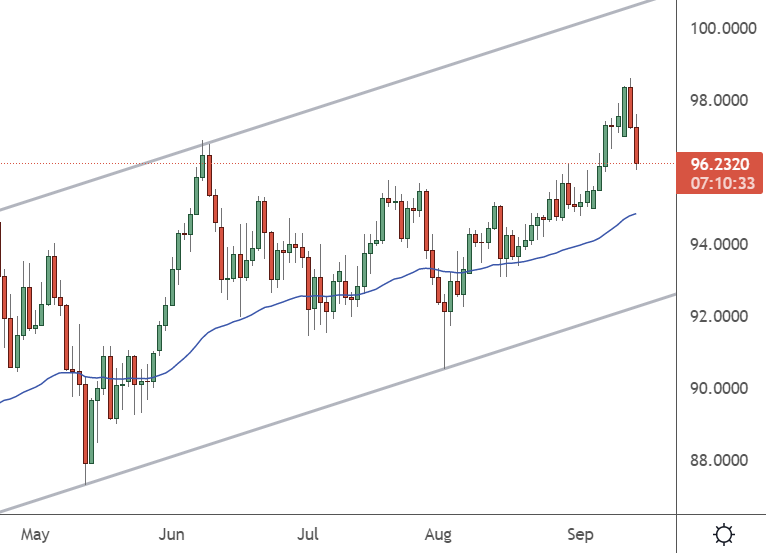AUDJPY has hit resistance at the 98 level and a correction is underway.
The Australian economy will face economic data on Thursday in the form of employment figures, and bullish traders have also backed off due to intervention comments from Japanese officials.
AUDJPY-Daily Chart
Australian employment figures will guide the AUDJPY pair on Thursday, and the dollar will look for an improvement on the previous month. The country saw a surprise drop in jobs during July, but that was not enough to deter the Reserve Bank from a 0.50% rate hike.
After the unexpected pressure in last month’s figures, Thursday’s data will be an important guide for the RBA’s monetary policy plans. The bank has always placed a firm focus on the labour market for its decisions, and they will hope that increased rates are not hurting the economy more than their forecasts.
The Australian economy is expected to see 35K jobs added in August, while the unemployment rate is likely to remain at over 40-year lows of 3.4%. As with previous trends in the Australian employment market, full-time jobs were lower by 86.9k while part-time positions climbed by 46k.
According to the NAB this week, business confidence was seen as higher for a second straight month in August. That could provide an underlying strength for the jobs market, but businesses are not adding full-time workers.
RBA Governor Philip Lowe said the bank’s board now “expects to increase interest rates further over the months ahead, but it is not on a pre-set path”.
During a recent interview, Lowe also said it is “very possible wage growth does not pick up much further.” He also hinted at a possible slowing in the bank’s interest rate increases, saying that the “neutral cash rate is at least 2.5%”. We could see the central bank take its foot off the pedal soon, and that could spur further strength in the Yen.
The Japanese currency was boosted by comments from officials close to the Ministry of Finance who expressed their disapproval of the recent Yen weakness in the markets. Intervention fears have led bulls to exit their positions at the recent highs.


